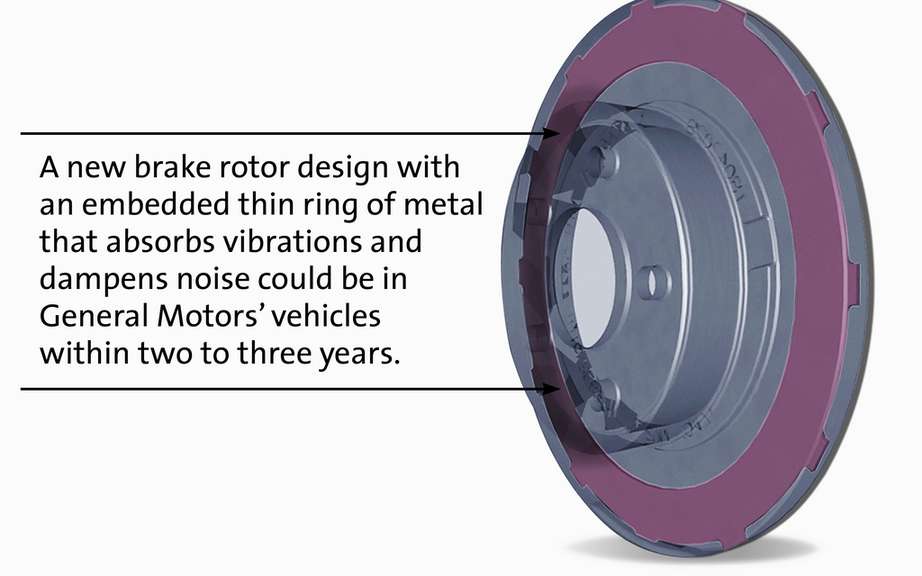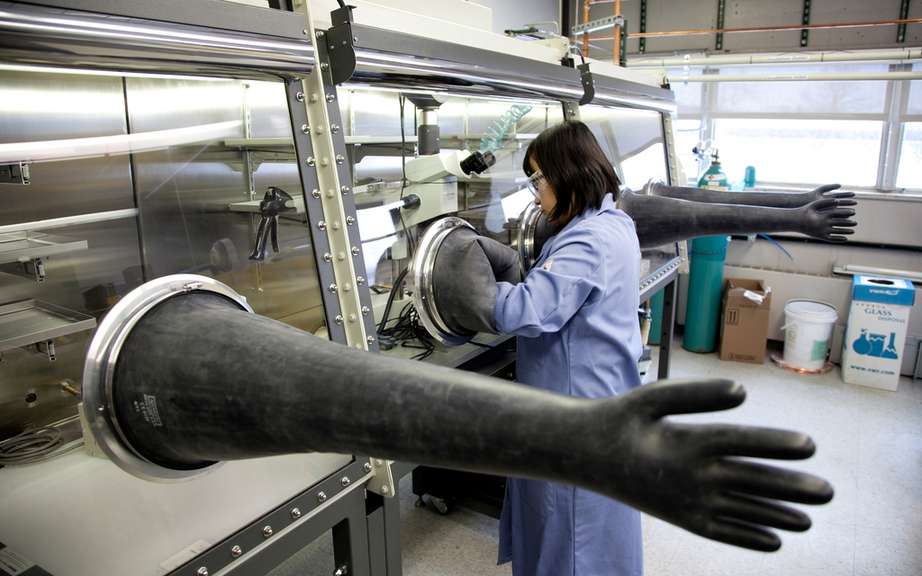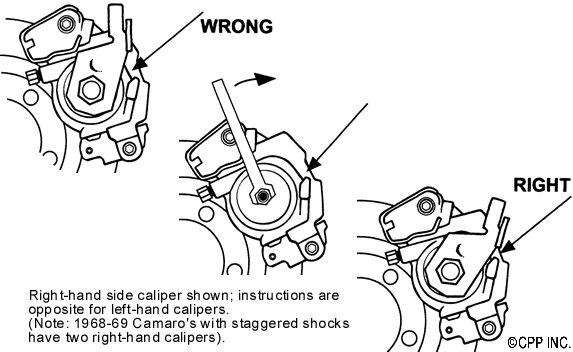The GM engineers dampen brake squeal
Adding an overlay that eliminates practically undesirable brake noise
• New brakes should equip some GM models in the next two to three years
• The new technology could allow the use of more lightweight brakes and smaller but superior braking power for added protection
For vehicle owners and automotive technicians, brake squeal is a source of frustration. This is the noise emitted When drilling a brake which, moreover, operate normally. The engineers from General Motors has developed a new technology that could eliminate a roughly this perennial problem.
The patented design uses GM has a thin metal ring encrusted in the brake disc to absorb vibrations and stifle grinding. The design is called brake disc friction damping after the Coulomb friction damping mechanism developed by the 18th century physicist Charles-Augustin de Coulomb.
Technology quieter brake technology adds a previously announced corrosion brakes which will be found on more than 80% of American GM by the 2016 model year vehicles and could allow customers to save more than $ 400 over 10 years.
The quieter brake is still being tested by GM engineers but should be available on some trucks and cars in the next two to three years. There is good in the brake Coulomb damping is that it allows the brake to just play role, stated Jim Webster, specialist in hard technical services GM.
"When we design brakes, our goal is that they are an extension of the driver" to entrust Mr. Webster. "When he presses the brake pedal, the customer should not have to worry about unwanted noises. The vehicle should just stop or slow the planned distance. The Coulomb damping brake allows the brake to operate silently and homogeneous as intrinsic part of the vehicle. "
Automotive engineers are faced with brake squeal for 100 years. By their nature, the brakes work by friction and are an important potential source of noise. The undesirable brake noise is usually produced when the brake pads are pressed against the flat surface of the disc to slow or stop the vehicle. The friction between the two surfaces produces vibrations and noise.
In the case of use brakes, the noise may indicate that platelets are thin and need to be replaced. But in many cases, particularly new brake squeal is unpleasant but does not indicate a mechanical failure of the system that would make little sisters. In today's brake systems, noises are reduced to a minimum primarily by the use of sound-absorbing materials in brake pads, which can significantly reduce brake squeal but accelerate wear them.
The brake Coulomb damping attack the problem by targeting the play of brake system that produces more noise, the disc. The disc, however, is difficult to muffle because it presents large open area that can vibrate. To create the new brake, GM engineers have developed a proprietary manufacturing process that has entrenched a metal ring inside the disc.
The inlay is coated with a special coating that prevents to merge with the rest of the disk during the molding thereof. The overlay can thus absorb vibrations and serve as a cushion. Same as pressing an object against a ringing bell.
"The Coulomb damping brake essentially creates a bell that does not" want "not sound" of imaging Jim Schroth, a group leader at the Research Laboratory of GM manufacturing systems. "By absorbing the vibrations in the drive through the special inlay, we reduce to silence the bell."
A short term, the Coulomb damping brake could significantly reduce the number of customer complaints relating to undesirable brake noise that would otherwise work perfectly. The Coulomb damping brake warn the driver all the same, perhaps through electronic sensors, the brake pads are worn and need to be replaced.
In the long term, the Coulomb damping brake opens new avenues in the design of brakes. The brake systems of the future could use materials with a coefficient of friction even higher, for more powerful tightening, given that the Coulomb damping brake can eliminate the increased risk of grinding.
"The Coulomb damping brake creates new possibilities because we have more to worry us as much unwanted noise" says Webster. "It would allow us to create the most lightweight braking systems and smaller more effective than imposing brake systems of some of today's vehicles. "
The improvements of GM brake technology also includes recent work aimed at eliminating rust disk has double the life span of components and allow consumers to save hundreds of dollars over the lifetime of their vehicle. For more information, click here.







